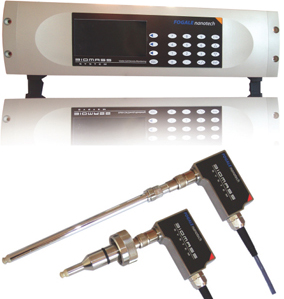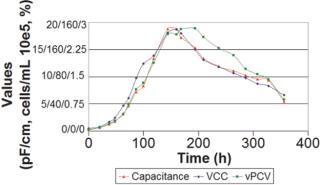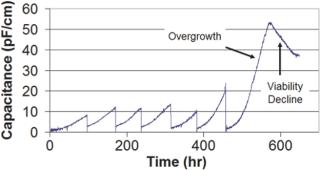
On-line biomass monitoring using capacitance is now a routine task in cell culture. The capability to develop advanced bioprocesses relies on sensitive process monitoring technologies and robust process control strategies.
Unlike optical technologies, capacitance is insensitive to dead cells, cells debris, gas bubbles, or other matter in suspension. With its capacitance-based sensor, FOGALE nanotech has supplied many pharma/biotech companies around the globe. The Biomass system is widely recognized as a powerful tool from process development to CGMP production scale. It is ideal for monitoring animal cells in suspension (including clumping cell lines) or attached to microcarriers and is also routinely used for yeast or bacteria batch and fed-batch processes, with high biomass concentration up to 200 g/L dry weight.
Figure 1 demonstrates how the Biomass system is reliable for on-line tracking of viable biovolume by measuring capacitance in a fed-batch CHO culture.
Capacitance measurements can also make a process more consistent as it is scaled up. Figure 2 shows several successive seed and inoculum cultures grown to a consistent transfer density while monitored by capacitance values. The final batch shows how overgrowth and viability decline can be easily observed.
Important cell culture transition points are under control. FOGALE nanotech brings capacitance measurement to a new level with the use of dielectric spectroscopy: By applying multiple frequencies scanning 0.1–15 Mhz, the system determines on-line capacitance spectra described in the literature as the beta-dispersion phenomenon. Frequency scanning extends users’ ability to measure biovolume by providing additional information on average cell size, cell size distribution, and viable cell count, as well as signaling important transition points in a culture.
Save time with automated control loops. Capacitance measurement contributes to the Pat initiative by providing exact transfer and seeding densities with real-time monitoring of viable biomass. Once captured in an acquisition system, the capacitance data can be used in control loops or as an input value in automated routines — e.g., to trigger an automated batch transfer or refeed.



